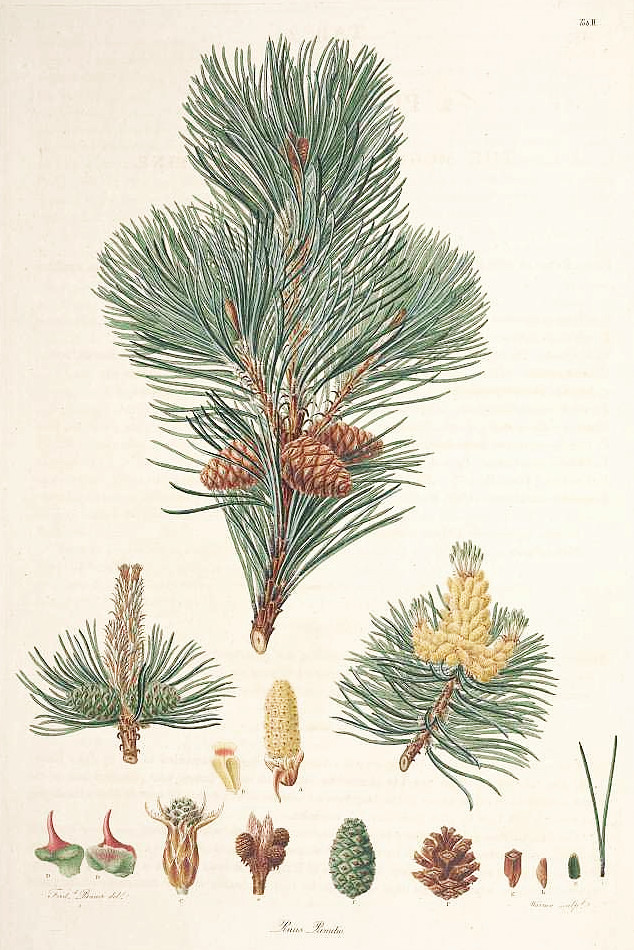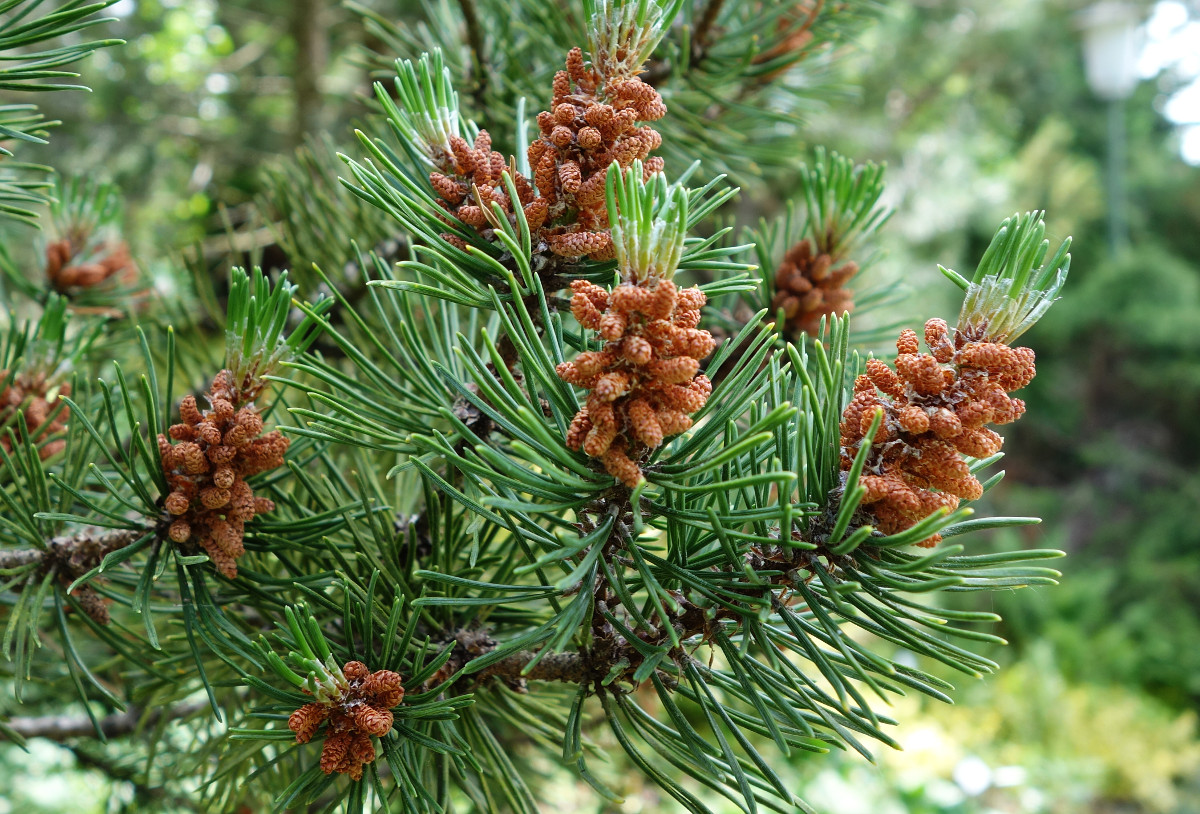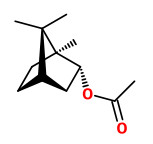Pinus mugo Turra - syn.Pinus montana Mill.; Pinaceae
dwarf mountain pine, Bergkiefer, Bergföhre, Latschenkiefer, Latsche, Krüppelkiefer, Legföhre
Evergreen tree, 1-3m high, native in the mountains of Central and South Europe.
„Pine oil is used in pharmaceutical preparations (cream, ointment, inhalation) against catarrh of the upper and lower respiratory tract. It is also used for sauna infusions. In medical baths, it supports the treatment of rheumatic diseases in non-acute stage.“
http://de.wikipedia.org/wiki/Latschenkiefern%C3%B6l
The essential oil of P.mugo is used in cosmetic preparations to promote blood circulation to the legs and feet, to nourish the stressed skin and make it supple and resistant. The antibacterial activity also reduces the formation of malodors.
„The monoterpene and sesquiterpene hydrocarbons of a commercial sample of Pinus mugo essential oil were isolated by a combination of techniques involving chromatography, distillation and preparative GLC. Eleven monoterpenes were identified by their IR spectra and TLC of their mercuric acetate adducts. IR and mass spectroscopy were employed to identify the following seven sesquiterpenes: β-caryophyllene, α-humulene, γ-muurolene, α-muurolene, α+β-selinene and γ-cadinene. Bornyl acetate was also present as a contaminant among these hydrocarbons.“
[Monoterpene and sesquiterpene hydrocarbons of Pinus mugo. Bambagiotti A, M., Vincieri, F. F., Cosi, G., Phytochemistry, Vol.11(4), 1972, 1455-1460]
Freshly steam-distilled essential oils of P.mugo contained only traces of p-cymene (0.05-0.1%) and higher amounts of β-caryophyllene (4.6-5.4%). Main components of these oils were α-pinene (13-25%), δ-3-carene (16-26%), β-pinene (3-15%) and β-phellandrene (2-8%). Commercial oils (Germany) showed mean values of α-pinene (24.4%), δ-3-carene (17.8%), β-pinene (9.8%) and β-phellandrene (8.2%). Old oils showed elevated values of p-cymene (1-2%) and small amounts of β-caryophyllene (0-0.8%).
[Braun, M. (2002). Verbesserung der Arzneibuchvorschriften und ihre Angleichung an das Europäische Arzneibuch am Beispiel von ätherischen Ölen (Doctoral dissertation)] http://epub.uni-regensburg.de/9910/1/Hauptdoku.PDF
„The chemical composition of the essential oil of the needles and twigs of dwarf pine (Pinus mugo Turra) growing wild in Serbia was investigated. The oil was analysed by GC/MS and the major constituents found were δ-3-carene (23.9%), α-pinene (17.9%), β-pinene (7.8%) and β-phellandrene (7.2%).“
[The essential oil composition of Pinus mugo Turra from Serbia. Stevanovic, T., Garneau, F. X., Jean, F. I., Gagnon, H., Vilotic, D., Petrovic, S., Pichette, A., Flavour and fragrance journal, Vol.20(1), 2005, 96-97]
„Pinus mugo Turra (Pinaceae) or Mountain pine is low and shrubby conifer which can be found in Republic of Macedonia in very huge population, only in central part of the country, on Karadzica Mountain. Withal, this location is the southernmost extensive point for this plant. The needle essential oil was obtained by hydrodistillation in Clevenger apparatus after removing the needles from the branches and was yielded from 0.15 to 0.65%. The chemical composition of the essential oil was analyzed by gas chromatography/mass spectrometry and the most abundant components were monoterpenes α-pinene (6.2–12.9%), β-pinene (1.3–3.3%), δ-3-carene (10.1–18.7%), limonene + β-phellandrene (3.1–5.7%), α-terpinolene (2.1–3.0%) and bornyl acetate (2.0–3.7%) and sesquiterpenes trans-caryophyllene (5.7–6.4%), germacrene D (2.4–11.8%), bicyclogermacrene (3.0–6.8%), δ-cadinene (4.0–6.6%), τ-muurolol + τ-cadinol (2.5–4.4%) and α-cadinol (3.4–5.0%)… The needle essential oil was confirmed to have significant antimicrobial activity, especially against Gram positive bacteria such as Streptococcus pneumoniae, Streptococcus pyogenes and Streptococcus agalactiae…“
[Chemical characterization and antimicrobial activity of the needle essential oil of Pinus mugo (Pinaceae) from Macedonian flora. Karapandzova, M., Stefkov, G., Dokik, E. T., Panovska, T. K., Kaftandzieva, A., Kulevanova, S., Planta Medica, Vol.77(12), 2011, PL59]
(3E,5Z)-undeca-1,3,5-triene (0.1%) was a key odorant in headspace samples of Pinus mugo needles.
[Scent of a vanishing flora, Roman Kaiser, 2011, 170]

Lambert, A.B., Description of the genus Pinus and some other remarkable plants, 2nd ed., vol.1, t.2 (1890) [Ferdinand Bauer]
http://plantgenera.org/species.php?id_species=794783

Pinus mugo © Andreas Kraska CC BY-SA 3.0






